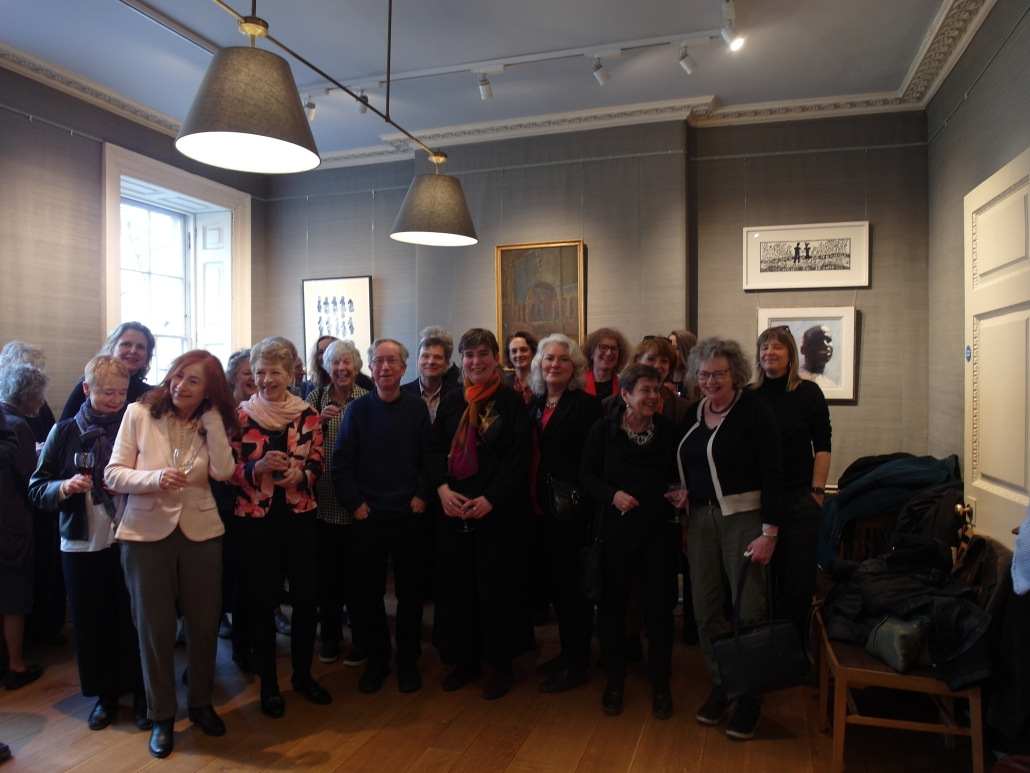The stupendous Dictionary of Art: never before, never since
 “One of the 50 best reference sources of the millennium.” (Library Journal)
“One of the 50 best reference sources of the millennium.” (Library Journal)
“Succeeds in performing the most difficult of balancing acts, satisfying specialists while at the same time remaining accessible to the general reader.” (The Times)
“As a reference work there is nothing to compare.” (The Daily Telegraph)
Q: What were these reviewers talking about?
A: The incomparable The Dictionary of Art (later Grove Dictionary of Art).
TDA, as it was known to its friends, was the largest project there had ever been in British publishing when, 16 years in the making, it was published in 1996. In print form, it ran to 34 volumes. Six thousand experts contributed their knowledge of art and architecture from prehistoric times to the present day, providing worldwide coverage, from Oceania to North America and Japan and Africa: more than 41,000 articles in all. Hundreds of editors, proofreaders, indexers and executives of various types worked for TDA during those 16 years. Most of us had a ball.
When I joined in September 1991, the Japan area editor, Kendall Brown (now Professor of Asian Art History at California State University Long Beach), was about to return to America. I overlapped with him for about a month, after which, on the premise that a good editor can turn his or her hand to any subject, I was thrown into Japan.
Colleagues assumed I was a Japanologist. “I know where Japan is,” I’d say. “That’s about it.” But I learned the hard way and, by the time Japan was “finished” about four years later, I knew quite a lot about Japanese prehistory, history, customs, architecture, archaeology and of course the visual arts.
In 2008, I finally got the chance to visit Japan with my younger son and daughter. I dragged them round to places I’d learned about at the Dictionary: “We have to go to Nara, Japan’s ancient capital, and see the oldest wooden buildings in the world! We have to see Todaiji, a temple in Kyoto, the largest wooden building in the world!” Golden temples, silver temples, shrines, the royal palace and so on and on, not to mention the supremely polite people, the food, the cherry blossoms, the markets, the deer wandering the streets and of course the achingly punctual Bullet Train. We loved it all, even including our stay at Kyoto Cheapest Inn (that was actually its name).
Here’s a puzzle to reflect on. Japan was closed to the outside world for 200 years, from the later 16th century to the mid-19th. Why? Was this a function of the Japanese psyche and culture or, conversely, was the Japanese character moulded by this closure? And another puzzle, possibly related. The Japanese were notoriously cruel in their treatment of prisoners during WWII. And yet their art and architecture, their needlework, their pottery, are all notable for their extreme finesse, precision and elegance. How do you reconcile those two things? I have an idea but will welcome your thoughts on it.
And now. Recently we had a reunion of TDA people (that’s me in the pink scarf and floral jacket). About 50 of us, including the Editor (in Chief), Jane Turner, and the MD, Ian Jacobs, gathered at the Artworkers’ Guild to reconnect, update one another on our doings of the last 35 years or so, eat, drink and reminisce. Some have gone into different fields – IT, the law, teaching or physical training. Others are still plugging away in the publishing business. And why not (apart from the poor pay)? It’s endlessly challenging, fascinating and educational, and you meet the nicest people.
Will there be another reunion in 2026 to mark 30 years since publication? Now, wouldn’t that be nice!


Leave a Reply
Want to join the discussion?Feel free to contribute!